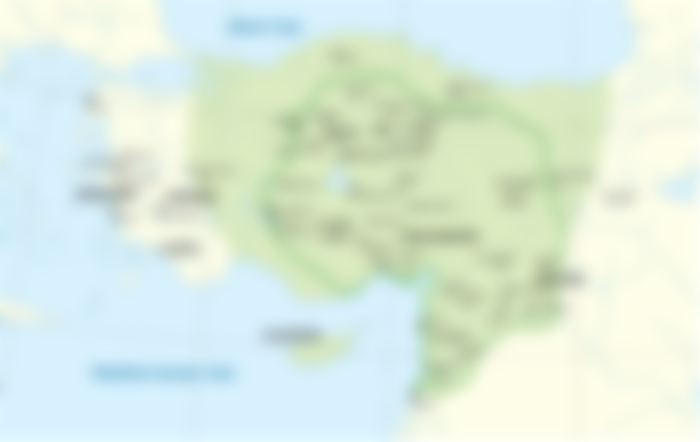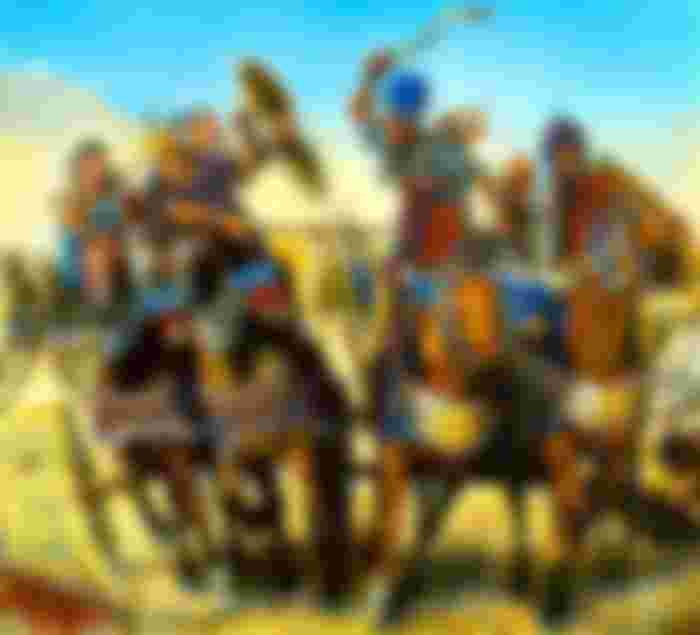The Hittites were an ancient Anatolian people who founded an empire with center in Hattusha in north-central Anatolia around 1600 BC.
This empire reached its peak in the middle of the 14th century BC. under Supilulium I, when it included the area that occupied most of Anatolia, as well as parts of the northern Levant and Upper Mesopotamia.

Between the 15th and 13th centuries BC. the Hittite empire came into conflict with the Egyptian empire, the middle the Assyrian Empire and the Mitanni Empire for control of the Middle East. The Assyrians eventually emerged as the dominant force and annexed it many parts of the Hittite empire, while the rest were plundered by the Phrygian new peoples in the region. After Fr. 1180 BC, during collapse of the Bronze Age, the Hittites split into several independent Neo-Hittite city-states, some of which survived until the 8th century BC. until they succumbed to the Neo-Assyrian Empire.

Due to the presence of ore deposits and forests in Asia Minor, the Hittites had an abundance of metal and wood, unlike the states located in the valleys of large rivers. The Hittites refused the mediation of the Assyrian and Babylonian merchants and enjoyed the blessings of nature themselves.
The discovery of iron weapons is one of the most important events in Hittite history. Iron has not always been used for warfare because ancient human populations did not know how to process iron ore to turn it into a weapon. The present invention is attributed.The Hittites were the first to make weapons and armor out of iron.

Thus the Hittite kings did not seek to occupy key trade routes and cities, as did the rulers of Egypt, Assyria, and Babylon. The Hittites had everything of their own. They planned their military campaigns more freely, wasting no time taking possession of a seaport, customs post, or an important ship across the river. The Hittite kings delivered carefully prepared blows over vast territories, covering on all sides the points that offered the greatest resistance.
One of the Hittite discoveries were perfected war chariots. The Hittites knew the art of horse breeding well. Horses are rarely used for riding and more often for pulling two-wheelers. Unlike heavy Egyptian chariots whose wheels were loaded and pulled by donkeys or oxen, the Hittites had light chariots with spokes that carried victory over the enemy. That's the best saw in the battle of Kadesh in 1275 BC. When the Hittites were defeated Egyptians.

The success of the Hittite economy was based on fair trade. Like they sold gold, silver and copper as a substitute for sheet metal ,wool and woolen clothes. The banking system made loans available. This, however, is humane, so if for example. the farmer could not repay the loan due to poor harvest,sometimes it was annulled by the king.
The Hittites used the Mesopotamian cuneiform. ie. Semitic-Mesopotamian Akkadian language of Assyria and Babylon, diplomatic the language of that time. There are also variants of the language of the people Hittite confederations (e.g. Luwian, Lydian, Carian, Pydian etc.). Hittite is one of the 8 languages of the Anatolian language group.

The Hittites played a significant role in ancient Eastern history, managing to win their place under the sun. The world seemed to have already been divided between the ancient powers, but the Hittites who were late in the division did not yield to any of them.

Their kingdom disappeared almost without a trace around 1200 BC. The Hittites knew how to resist powerful states. But before the powerful wave of natural invasion of dozens of tribes and peoples from the Balkan Peninsula, they were powerless. It would, one might say, cover the head of the Hittite kingdom. After the defeat of the state capital, Hattus, the force that united the small principalities ceased to exist. The great ancient empires went into oblivion in various ways: some fell apart, others died after a long, severe illness. The Hittite kingdom disappeared in the air like obscure knowledge.





